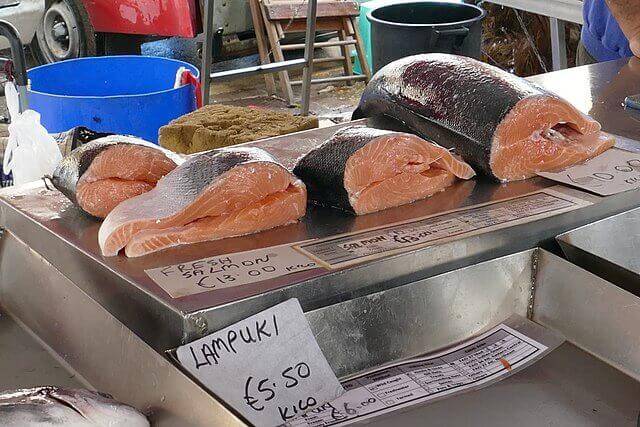
Ideas to think about: According to the findings, feed accounts for the majority of salmon and chicken farming’s carbon footprint.
Aquaculture will hopefully become more environmentally friendly as a result of recent research into novel feeds for animals.
New research suggests that the food the animals are raised on is responsible for the majority of the environmental effects of farmed salmon and chicken.
According to a study that was published in the journal Current Biology, the feed that is given to salmon and farmed chickens accounts for at least 78% and 69% of the pressures that these industries place on the environment, respectively.
Global freshwater use, nutrient pollution, land or ocean disturbances, and greenhouse gas emissions were examined by scientists in relation to chicken and salmon farming.
“Both sectors show similar patterns for greenhouse gas emissions, with more than 55% of emissions originating from feed activities,” they wrote.
The study’s lead author, Dr Caitie Kuempel of Griffith University, said while chicken and salmon farming were more environmentally efficient than other industries such as beef, she was “surprised mostly by how vast both of the footprints are”.
According to the study, less than 5% of the world’s total area was responsible for 95% of the cumulative effects of salmon and poultry farming.
It was discovered that despite the fact that chicken farming required nearly nine times as much land as salmon farming (924,000 sq km vs. 103,500 sq km), it produced 55 times more product.
The study also found that the environmental pressures faced by the chicken and salmon industries overlap geographically by 85.5%, primarily as a result of the animals being fed the same feed ingredients.
Salmon aquaculture requires an estimated 2.3 million tonnes of crops for feed annually, primarily oil crops, soya beans, and wheat, in addition to fish oil and fishmeal. Chickens are fed fishmeal and fish oil in addition to crops, which make up the majority of commercial poultry feed.
Peru, Norway, and Chile are the world’s largest producers of salmon feed, while the US, Brazil, and China are the world’s largest producers of chicken and chicken feed.
In the future, the researchers noted, an expected increase in the price of fishmeal would raise “the question of whether the demand for land or marine feed resources are more sustainable, particularly given shifting diets and consumer preferences”.
“Food is one of the biggest environmental pressures to the planet and we’re all trying to be more conscious about what we’re eating,” Kuempel said.
“Anything that requires feed is going to have a higher environmental footprint than things that are not fed,” she added. “Many other studies have shown that being vegetarian and vegan are usually better options, and even things like [some] shellfish that don’t have these feed ingredients have lower environmental pressures.”
Aquaculture could become more environmentally friendly and less dependent on fishmeal and oil, according to recent research into new animal feeds made from insects and microalgae.
“Since salmon is a premium product, they are looking more into these novel feeds and how they can decrease the feed conversion ratio – how much feed you put in versus how much you get out,” Kuempel said.
“Salmon is already quite efficient – so around one tonne of feed that you put in, you get the same amount out. But using these novel feeds, you can perhaps get better nutrition for the animal while also decreasing your footprint.”
The sources of fish oil and fishmeal, which are frequently derived from seafood waste, were not taken into consideration in the study. Kuempel noted that the environmental footprint calculations may have been affected by this.
——————————————————————————
At Natural World Fund, we are passionate about stopping the decline in our wildlife.
The declines in our wildlife is shocking and frightening. Without much more support, many of the animals we know and love will continue in their declines towards extinction.
When you help to restore a patch of degraded land through rewilding to forests, meadows, or wetlands, you have a massive impact on the biodiversity at a local level. You give animals a home and food that they otherwise would not have had, and it has a positive snowball effect for the food chain.
We are convinced that this is much better for the UK than growing lots of fast-growing coniferous trees, solely to remove carbon, that don’t actually help our animals to thrive.
This is why we stand for restoring nature in the UK through responsible rewilding. For us, it is the right thing to do. Let’s do what’s right for nature!
Support our work today at https://naturalworldfund.com/ and join in the solution!

